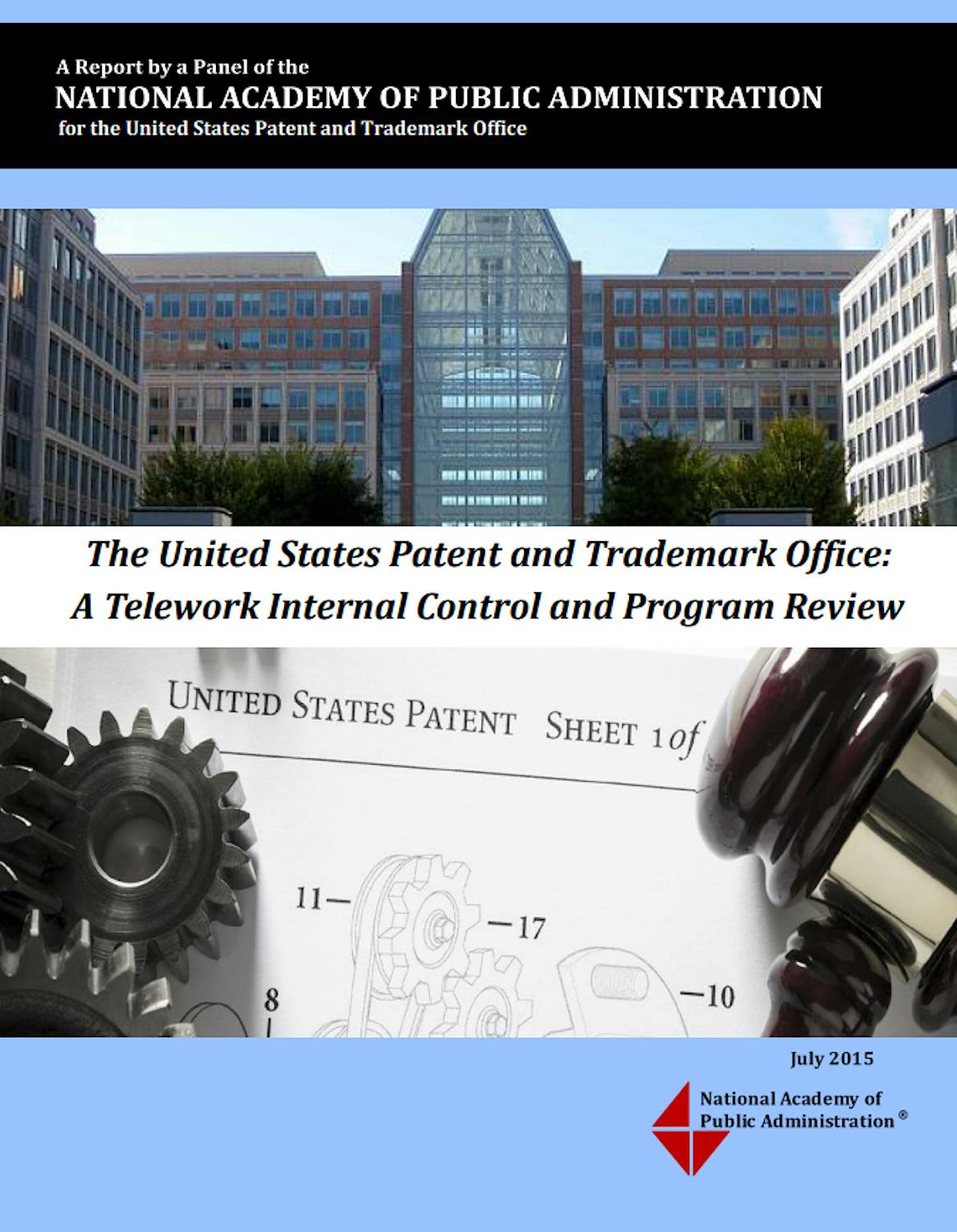
The United States Patent and Trademark Office: A Telework Internal Control and Program Review
The United States Patent and Trademark Office (USPTO) requested that the Academy review its telework program to ensure that management controls and programmatic goals are effective and aligned with the Agency’s mission. This entailed a two-part review of the telework program, including:
- An internal control review of the USPTO telework program to determine if it complies with the Internal Control standards outlined in OMB Circular A- 123, Management’s Responsibility for Internal Control; and
- A programmatic review to determine the effectiveness and efficiency of the USPTO Telework Program.
To conduct this review, the Academy assembled an expert Panel of five Fellows. These individuals brought a diverse background in federal service and academia, as well as an extensive knowledge of management and operational standards of personnel, and knowledge of how to manage a dispersed workforce.
Click the button below to view the View Study Report.
View ReportKey Findings
Over the course of the nine-month review, the Panel received broad input from a wide range of external and internal stakeholders, including USPTO executives and employee groups. As part of this review, the Academy team also surveyed all Supervisory Patent Examiners (SPEs) to develop a current picture of the supervisor’s perspective on whether recent training and policy improvements have been beneficial to the USPTO.
The Panel determined that the telework program has provided important benefits to the USPTO, including saving money, enhancing employee quality of life, potentially increasing recruitment and retention, and ensuring on-going work during emergencies. The Panel found that the USPTO has the controls in place to manage time and attendance for both on-site workers and teleworkers. The Panel recommended that the USPTO continue its Telework and Hoteling Programs, while enhancing oversight mechanisms and strengthening its management practices.
Recommendations
The Panel issued over 30 recommendations on how the USPTO could further enhance the telework program, including:
- Management should continue to review the procedures with supervisors to ensure that they are using available tools to confirm that employees are actively engaged in patent examination, and should examine impediments and concerns raised by supervisors about being able to do their jobs effectively.
- The USPTO should continue to provide refresher training on the management guidance concerning Time and Attendance.
- The USPTO should establish separate probationary/conditional periods for beginning full-time teleworkers. Full-time teleworkers should be required to maintain “fully successful” status for two years after completing their training in order to continue being eligible for full-time telework.
- Teleworkers should re-sign their teleworking agreements every two years to acknowledge acceptance of current telework policies and procedures.
- The USPTO should continue to focus on developing ways to measure the quality of the examination process to target areas for training and to provide indicators of activities in the process that might lead to improvements in the quality of patents. The USPTO can leverage its new Patent Quality Initiative as the foundation for this review. Quality should be continually assessed. The USPTO should perform an in-depth review of production standards for all of the 600-plus art units to determine if they are set at appropriate levels, and make adjustments, as needed.
